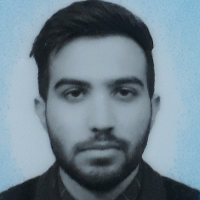Effects of Acceptance and Commitment Therapy and Transcranial Direct Current Stimulation on Craving and Problematic Pornography Use in Young Men: A Randomized Clinical Trial
Objectives:
Problematic pornography use (PPU) is one of the emerging clinical concerns that can negative affect individual performance. Therefore, it is necessary to use emerging behavioral and technological treatments. This study aims to investigate the effectiveness of acceptance and commitment therapy (ACT) and transcranial direct current stimulation (tDCS) in reducing craving and PPU in young men.
Methods :
This is a clinical trial with a pre-test/post-test/follow-up design. The study population consists of all men aged 18-24 years referred to the counseling clinic of Ferdowsi University of Mashhad, Iran in 2022 with diagnosed PPU. Of these, 9 were selected purposefully based on the entry criteria. They were placed in three groups of ACT, tDCS, and ACT±tDCS, using the computerized random number generator in SAS software, version 9.4 and the sequentially numbered, opaque, sealed envelopes (SNOSE) to preserve random allocation concealment. The data were analyzed based on visual analysis, percentage of non-overlapping data index, and mean percentage reduction (MPR).
Results:
The ACT led to a decrease in craving (MPR=26.2% with an effect size of 0.63) and PPU (MPR=27.05% with an effect size of 0.62). Also, tDCS led to a decrease in craving (MPR=22.7% with an effect size of 0.56) and PPU (MPR=21.2% with an effect size of 0.53). The combined treatment (ACT±tDCS) led to a decrease in craving (MPR=33.4% with an effect size of 0.72) and PPU (MPR=29.3% with an effect size of 0.67). The effects in all groups were significant (P<0.05).
Conclusion:
The combination of ACT and tDCS can lead to a more significant reduction in craving and PPU in young men than ACT and tDCS alone. ACT is more effective than tDCS in reducing craving and PPU.
-
Auditors' Sensory Processing Capability and Objectivity: Are Auditors Really Objective?
Reyhaneh Haghighi, Mohammadali Bagherpour Velashani *, , Mohammadreza Abbaszadeh
Iranian Journal of Management Studies, Winter 2025 -
Exploring the Synergistic Impact of Transcranial Direct Current Stimulation and Mindfulness Meditation on Anxiety Responses to Induced Rumination
Vahideh Momeniyan, Ali Ghanaeichamanabad*, Mohammad Saeed Abdkhodaei, Zahra Tabibi
The Neuroscience Journal of Shefaye Khatam, -
Biopsychosocial Determinants of Problematic Pornography Use: A Systematic Review
, Hamidreza Aghamohammadian Sharbaaf *, MohammadSaeed Abdekhodaei,
Addiction & Health, Summer 2023 -
Investigating the relationship between early maladaptive schemas and antisocial and borderline personality disorder mediated by pathological hostility and negative emotion
Zohreh Yousefi, Alireza Gol, Hamidreza Aghamohammadian*, Iman Seyadzadeh, Mohammad Valipur
Rooyesh-e-Ravanshenasi,




